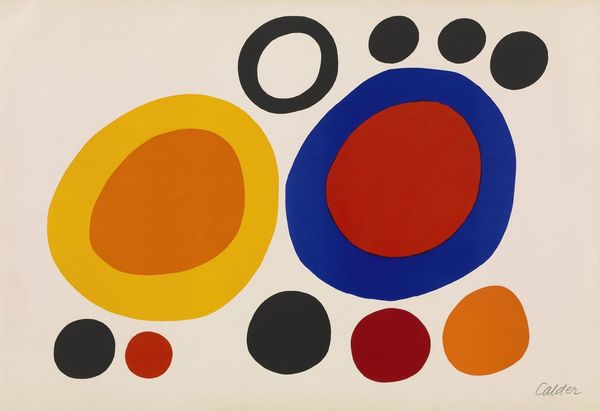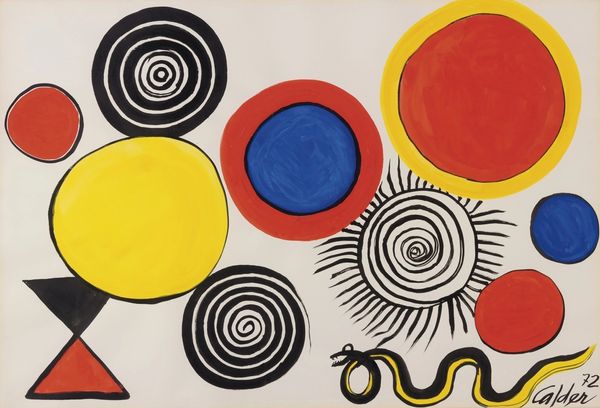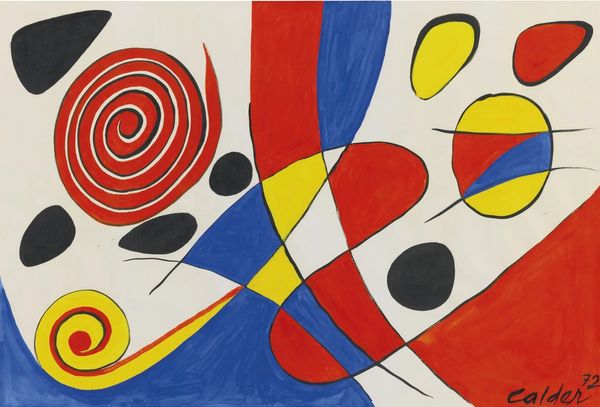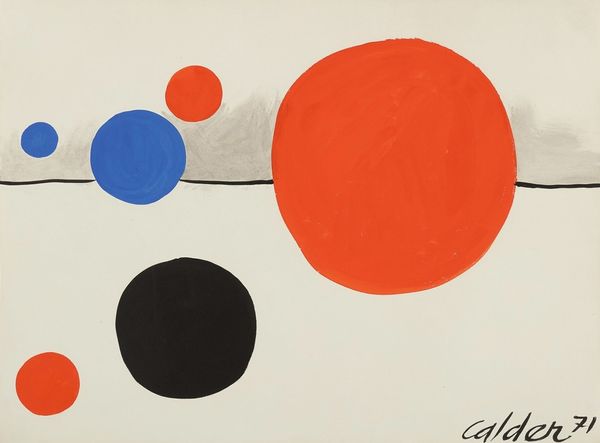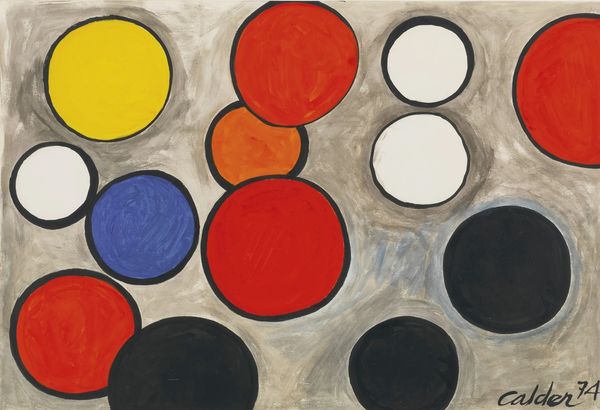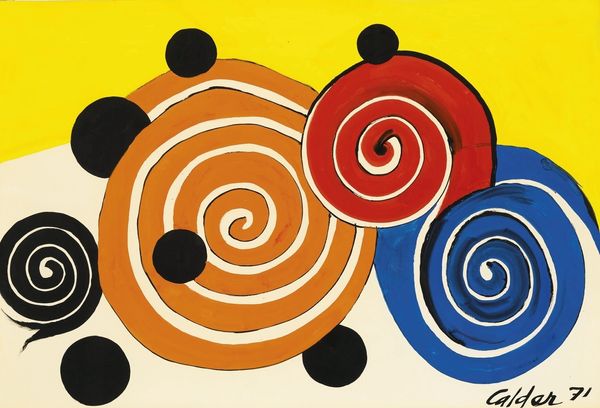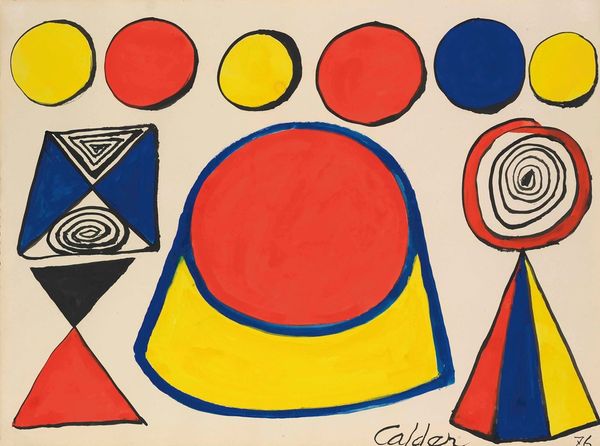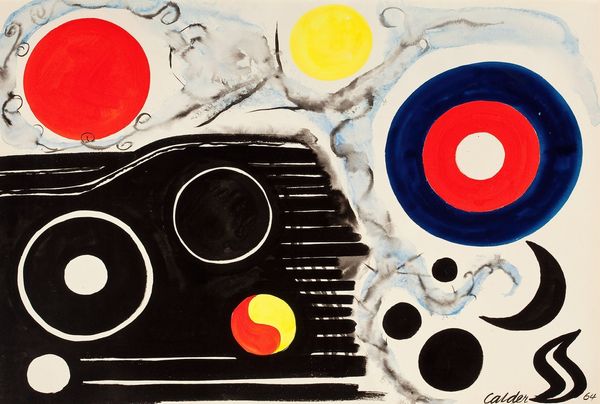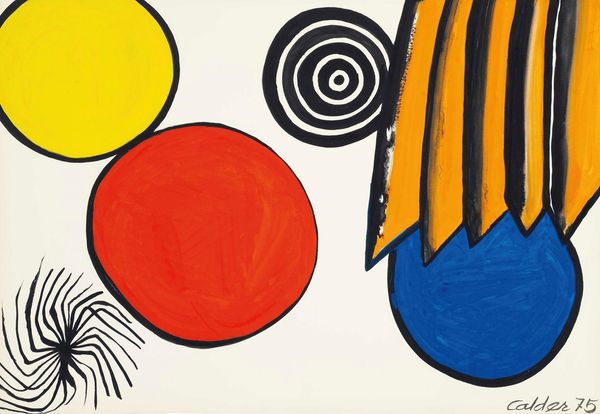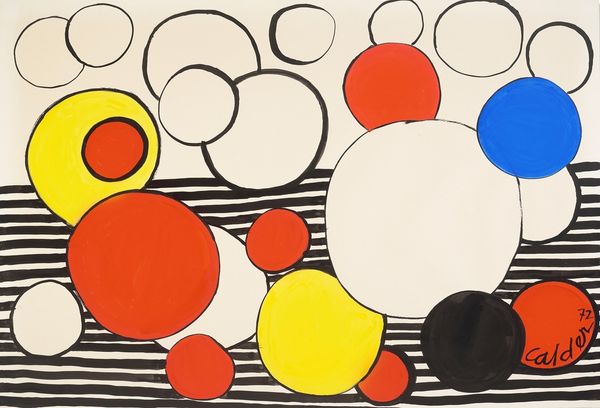
painting, acrylic-paint
#
popart
#
painting
#
pop art
#
acrylic-paint
#
abstract
#
form
#
geometric
#
pop-art
#
line
#
modernism
Copyright: Modern Artists: Artvee
Alexander Calder made "Nemo’s Pad" in 1967, employing the industrial process of lithography. Calder is best known for his kinetic sculptures called "mobiles," yet, his paintings and prints are also a significant part of his oeuvre. Lithography, a printmaking technique, depends on the chemical repulsion of oil and water. An image is applied to a flat stone or metal plate with a greasy medium, and then treated with chemicals to fix it on the surface. The plate is then inked and printed. In "Nemo's Pad," the solid areas of bold color and strong lines demonstrate a graphic simplicity, well-suited to lithography. The flat, almost mechanical nature of the printing process lends a modern sensibility to this playful composition. We see Calder’s interest in industrial production, which he integrated in his artistic process, questioning traditional notions of the artist's hand and emphasizing the importance of materials, and context in understanding the full meaning of an artwork.
Comments
No comments
Be the first to comment and join the conversation on the ultimate creative platform.
